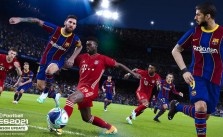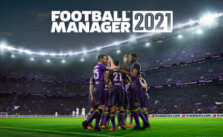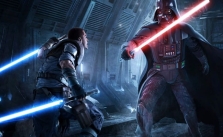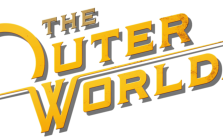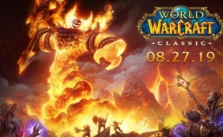Tennis Elbow Manager 2 – Skills Guide
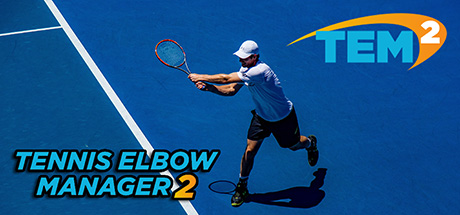
The skill percentages show the different levels of abilities of the players.
Some skills will be more effective and/or useful on fast surfaces, like service and volleys, and others will be more effective and/or useful on the slower surfaces, like forehand/backhand powers and consistencies and Stamina.
If you don’t train them, most skills will lower over time; the higher they are, the faster they’ll drop off.
Skills
Technical Skills |
Explanations |
|---|---|
| Precision vs. Power | The precision skills for the Service, Forehand & Backhand are relative to their respective Power skill. This means if your player has 20% both in Forehand Power & Precision, then he’ll have the same precision as having 40% in both of them. In other words, if you have 20% in both skills and you raise only your power to 40%, you’ll lose some precision, and to get it back, you’ll have to also raise the precision to 40%. And if you raise the precision skill above the power skill, the strike will get more accurate. |
| Forehand & Backhand Consistencies | Consistency is the ability to handle difficult balls, to lower the chances to do a fault on them. It can be seen as depending on your opponent’s power: to handle an opponent with 40% power on an average speed surface, you need 40% consistency. A better consistency will also allow doing deeper normal strikes and shorter short strikes. |
| Service | The speed of your services depends on your power; in addition, you get a small speed bonus on your 2nd serve when your consistency is above your power (and vice versa).
If your power is equal to your consistency, then you have 70% chances of success on your 1st serves; If your power is above your consistency, then you have less than 70% chances of success, and in the opposite case, you have more than 70% chances of success. |
| Topspin | Topspin is a really special skill, as it’s the only skill you can train to lower it in addition to raising it.
Topspin gives your player a bonus on clay & slow surfaces (higher for rally players and lower for volley players), but it makes your player tired a bit faster, whatever the surface is.
The higher the topspin is above 50%, the higher your player will get a handicap on fast surfaces (i.e., grass, indoor).
At 50%, the topspin is neither a bonus nor a handicap. So basically, if you have a volleyer playing on a fast surface, you’ll prefer to have a low topspin, and if you have a defender playing on clay, you’ll prefer to have a high topspin. |
| Volley & Smash | Depending on the strike done, the Net Presence skill is combined with the volley forehand, volley backhand, or smash skill, to define the precision and the consistency of the strike.
The power doesn’t depend on the Net Presence, only on the base skill.
Except that, the volleys & smashes work like the forehands and backhands from the baseline.
Moreover, the higher the Net Presence is, the more your player can run while volleying the ball without getting any handicap. |
| Return | The faculty to read and return the opponent serve |
| Lob & Drop Shot | The higher these skills, the more the player will do lobs & drop shots, and the more efficient they will be |
| Counter | The counter skill is the ability to use the incoming ball speed to send it back faster. So the counter skill gives you a speed bonus of up to 7.5 km/h on your normal and topspin strikes when the ball is coming really fast.
Moreover, the higher your counter skill is, the less you are constrained by fast incoming balls, but the slow incoming balls are also a bit less easy for you. |
Surface Skills |
Explanations |
| The surface skills don’t show the player’s innate abilities to play on each kind of surface. They only show if he’s currently used to playing on each different type of surface: they raise and drop quickly, depending on what surface the player is currently playing or training. | |
Physical Skills |
Explanations |
| Speed & Muscle Tone | The speed determines the maximum speed and the “(speed + muscle tone) / 2” determines the running acceleration. |
| Stamina | The Stamina is relative to “(speed + muscle tone) / 2”; e.g., if your player has 50% in all these three skills, he’ll get tired from running at the same rate as if he has 60% in all three skills. If the Stamina is above, then your player will get tired less fast, and vice versa. |
| Strength | A low strength will limit the potential of the service, forehand & backhand powers. Moreover, if your forehand or backhand power is above your strength, you’ll get more tired from hitting the ball (and vice versa). |
| Short & Long Term Forms | |
Mental Skills |
Explanations |
| Concentration | Defines the frequency at which your player will have a bad day with low energy, making him play less efficiently; the higher it is, the fewer it will happen. However, each bad day has a 10% chance to become a good day, where your player will play more efficiently than usual. |
| Constancy | Defines how much the player’s energy can lower or rise on a bad or good day. |
| Focus | The Focus is your player’s ability to focus on the ball to prepare his strike quickly enough. It’s relative to “(speed + muscle tone) / 2”, so if the Focus is above that, your player will prepare his strikes faster, leading to more accuracy and depth, as well as a better chance to attack the ball when needed; if it’s under, it’ll be the opposite. |
| Cold Blood | Defines the frequency at which a player will be stressed in important matches & moments, and when playing against an opponent less strong than him: in this case, his level will lower a bit, but only to his opponent’s level, at worst. |
| Tactic | Allows taking advantage of your opponent weaknesses and play smarter tennis overall |
| Positioning | Allows to wait for your next opponent’s strike in the place with the widest reach possible and to hit the ball from the most efficient place (i.e., not too high or nor too low) |
| Self Confidence | Allows playing closer to the lines without raising the risk. The Self Confidence raises with each match won and lowers with each loss. Moreover, when it is low, it raises when training. |
| Doubles Spirit | Alter most of your player skills while playing doubles. This skill raises with each doubles match played. |
| Motivation | Your player’s motivation slightly goes up when you win and goes down when you lose. It gets a noticeable boost when you win a tournament.
Motivation’s variations also depend on secondary elements like your available money, the class of hotel & plane your player takes, etc…A high motivation will lower the handicap from playing while tired, and a low motivation will raise it. A high motivation also gives a little bonus on all the training efficiency. |




